Speedrunning in Minecraft is a process that can take countless hours of practice for marginal improvements in completion time. The act of entering the End portal and defeating the Ender Dragon as quickly as possible takes plenty of understanding and manual dexterity to accomplish, so how can newcomers to speedrunning learn the ropes of what is required?
Learning even basic speedrunning in Minecraft can take some time, and there's much more to know once players have dipped their feet into the waters. Still, it doesn't hurt to at least know some of the basics before starting to practice speedrunning in the game.
A Beginner's Guide to Minecraft Speedrunning
Selecting Your Seed/Version
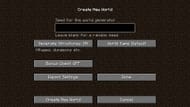
Chart New Territories with the ultimate Minecraft Seed Generator!
Before starting a Minecraft speedrun, it's important to know which version of the game is being played and what the world seed is depending on the objective. If you're hoping for a set seed run, you'll need to enter one of the approved seeds by the speedrunning observers, though there are also random seed runs for players who prefer to try their hand at those.
Typically, speedruns are attempted in Minecraft: Java Edition version 1.16.1 on Easy difficulty, which is a good starting spot for newcomers. However, other players sometimes attempt older or newer versions of Java or even Bedrock Edition on consoles, Windows PCs, and mobile devices. Still, 1.16.1 is often considered the best all-around version to begin with and practice in.
Starting With a Basic Speedrunning Strategy
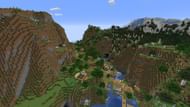
When starting out in Minecraft speedrunning, there are multiple ways to get from the world spawn to the Ender Dragon fight. Some are more productive than others, but one of the most basic and fruitful ways involves finding a village to collect beds and head to the blacksmith shop as quickly as possible to loot its chests for materials including blocks of obsidian, iron ingots/gear, food, and gold ingots.
From here, the immediate task is to quickly create a Nether portal to collect blaze rods and ender pearls. The objective is to move as quickly as possible to the Nether Fortress and kill blazes until players have roughly 8-12 blaze rods (depending on how many Eyes of Ender a seed's designated End portal needs in a set seed, though random seeds are more difficult to predict).
With the blaze rods in hand, it's time to head to the nearest bastion remnant structure and provide gold ingots to the nearby piglins, usually by mining the blocks of gold within these Minecraft structures. Depending on the random number generator (RNG), piglins will provide ender pearls that can be combined with the blaze rods to produce Eyes of Ender before returning to the Overworld.
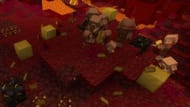
Back in the Overworld, it's time to head to the nearest stronghold to find its End portal. If the seed is set, the stronghold and End portal location are usually well-known. However, in a randomized seed, players will need to rely on their knowledge of how strongholds generate in their game edition/version as well as how they are laid out to quickly find the End portal.
Lastly, players will need to slot their newly crafted Eyes of Ender into the End portal slots and make their way into the battle with the Ender Dragon. Typically, speedrunners have very little gear to protect themselves in this fight, so they'll rely on using the exploding bed method to defeat the Ender Dragon and complete the speedrun.
There are of course other methods to complete speedruns in Minecraft, but this particular strategy is one of the most basic means of learning the ropes before diving into the more complicated matters in competitive speedrunning.
Choosing Mods/Unmodded and Between Glitched/Glitchless Runs
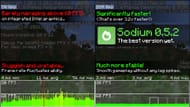
Once players have learned a little bit about Minecraft speedrunning, it's important to decide whether they'll want their runs to use mods or not, and whether or not they'll use glitches in their runs. Many fans use mods like Sodium for device performance or those for instant world resets, while others prefer to run the game in vanilla. Likewise, some fans prefer to use glitches and others don't.
Either way, there are categories for each choice, so players shouldn't feel restrained that they have to do a glitchless, modless, speedrun.
Understanding Movement and Sprint Jumping in Minecraft
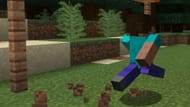
While knowing where to go and where structures generate in one's speedrunning strategy is of vital importance, so is traveling to the next location. Since players don't have time to find/breed a horse or craft a minecart, it's important to note that diagonal movement will be faster than simply moving north, south, east, and west.
Moreover, sprint jumping is a skill that prospective speedrunners should learn as soon as possible. This technique involves sprinting and jumping while timing the jumps just as the player lands to chain together jumps and build momentum from the sprinting and jumping combined. This makes traveling to any location during a speedrun much faster compared to walking or sprinting alone.
Learning From Professional Speedrunners
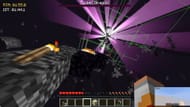
Speedrunning is an immensely time-labored and practice-based process, and there's so much to learn when it comes to the nuances of each type of run on each platform, edition, and version. Since this is the case, it isn't a bad idea to check out some of the best speedrunners in the game online via YouTube, Twitch, Speedrun.com, and more, to observe how the pros get their final times.
Newcomers shouldn't expect to be breaking world records from the beginning, but learning how experts approach their speedruns can help beginners pick up the pace substantially.
Uncover new worlds with our Minecraft Seed Generator!

